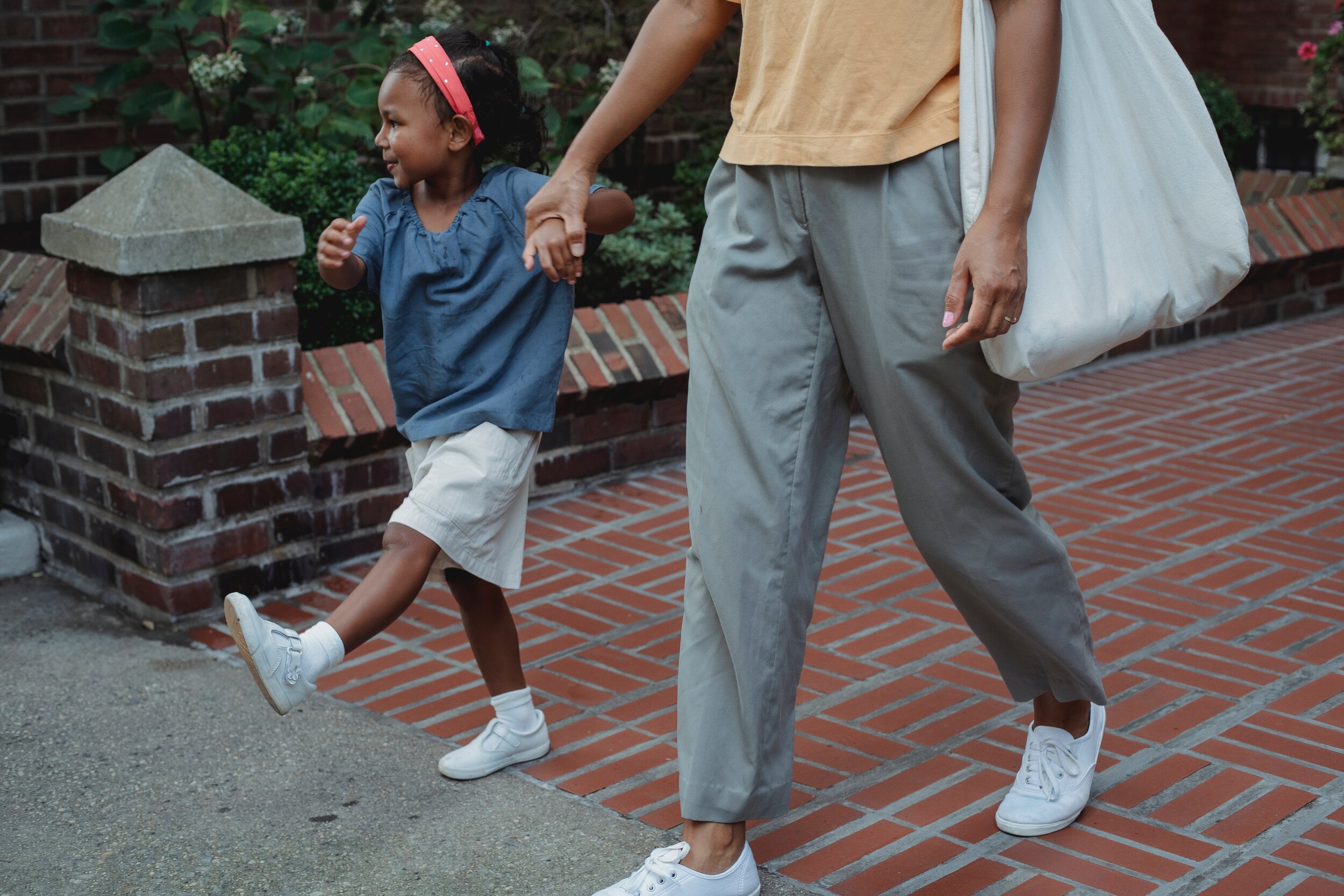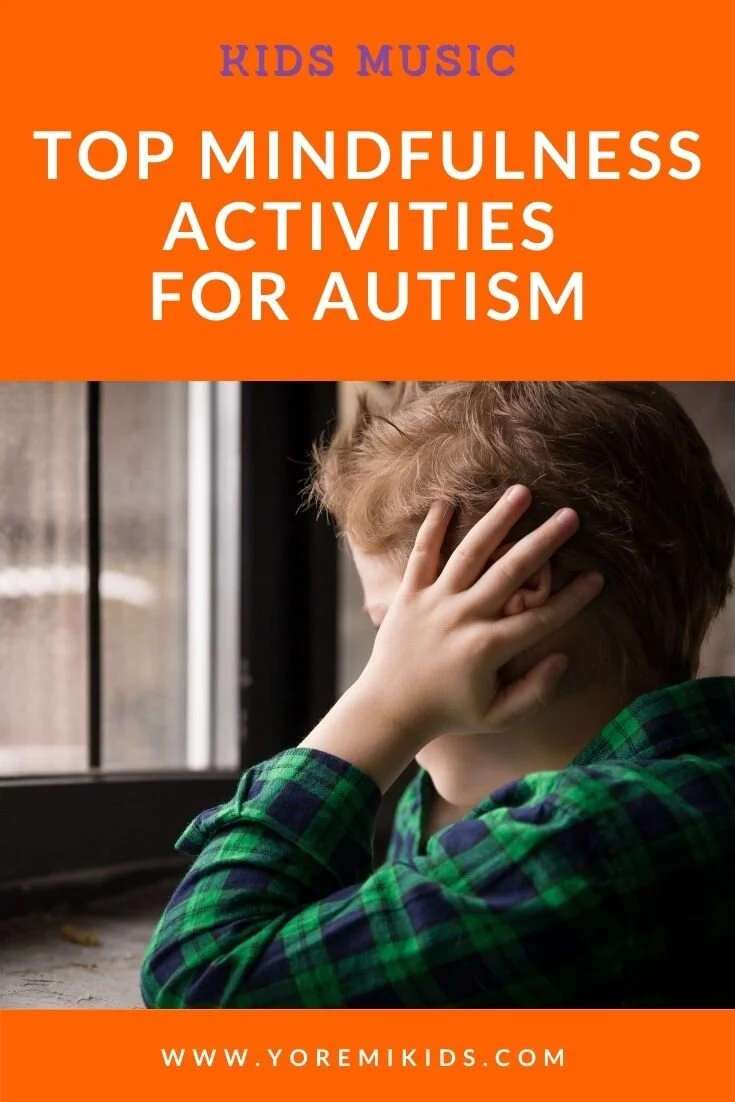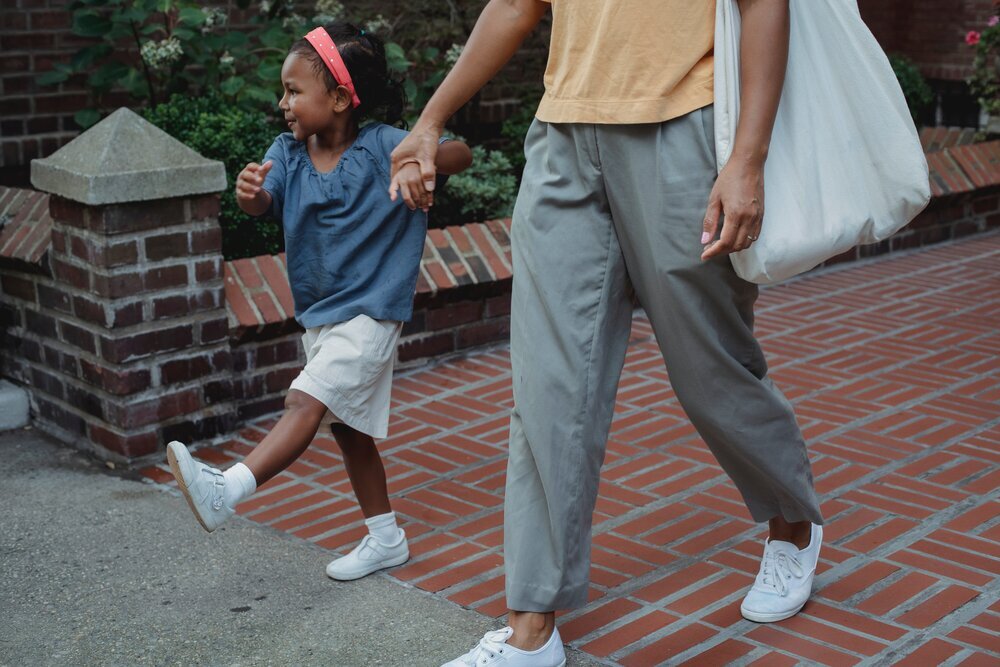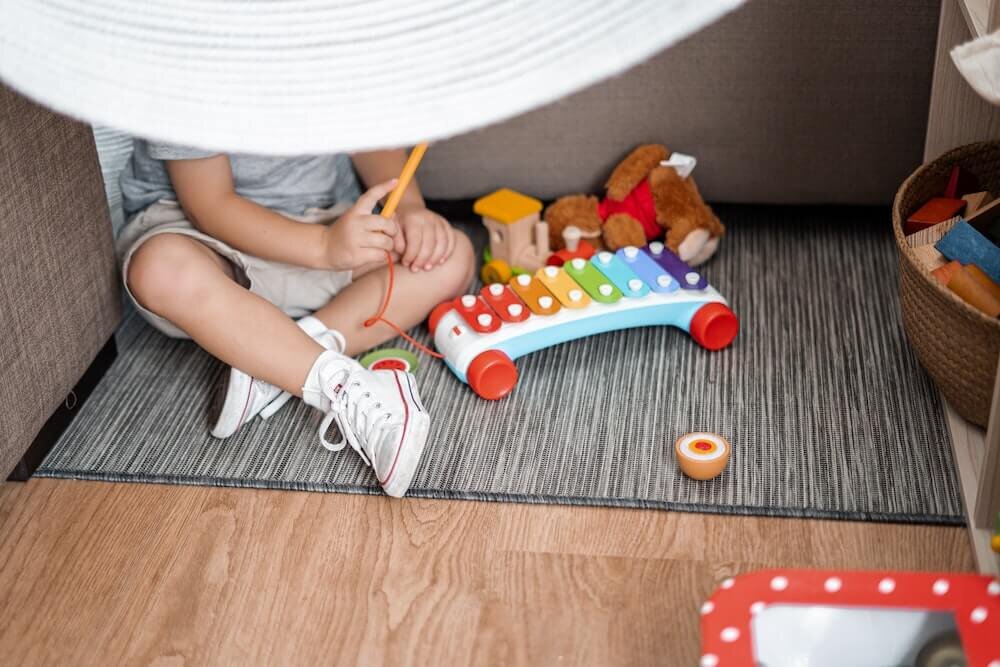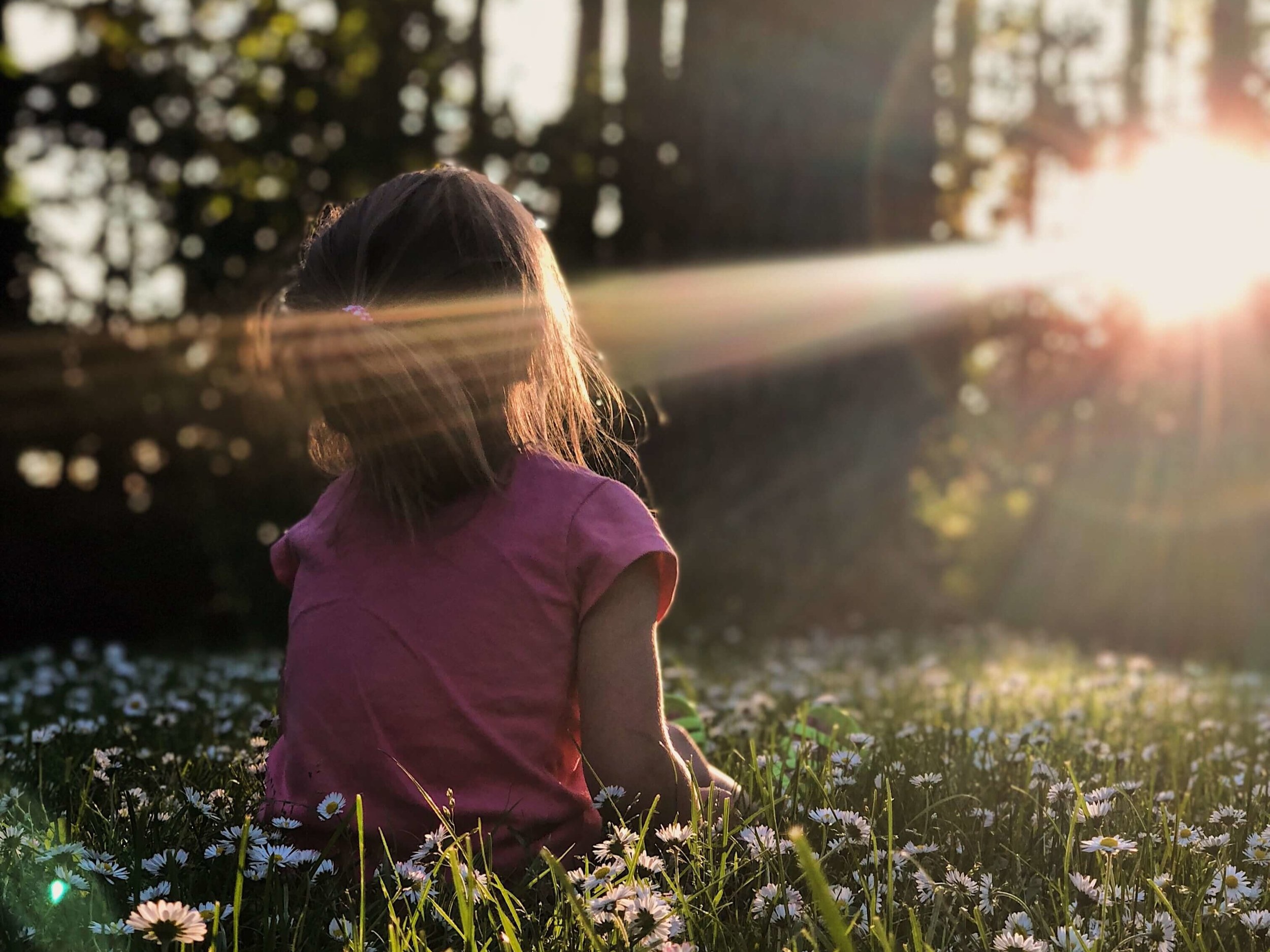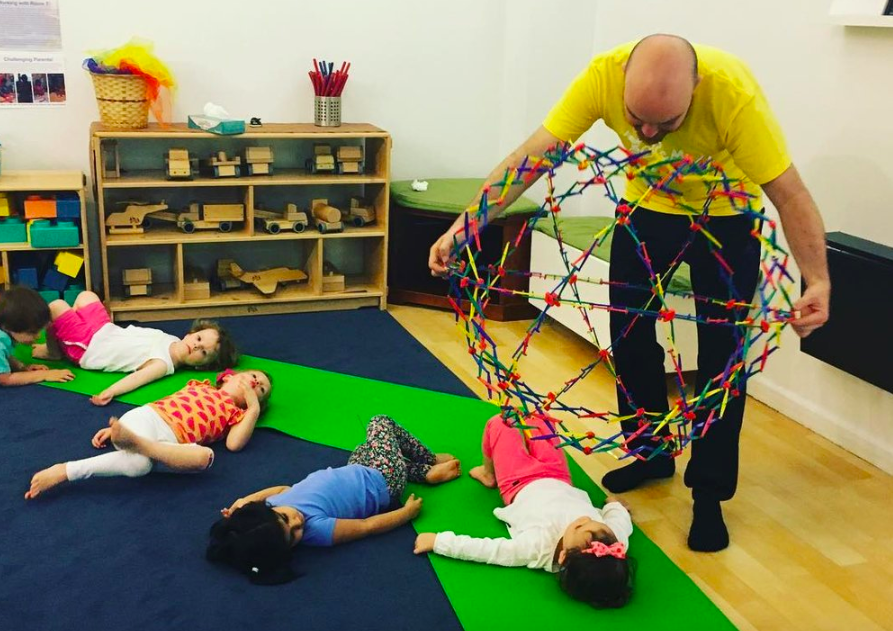8 Simple + Accessible Mindfulness Activities for Autism
The practice of mindfulness has become increasingly mainstream in recent years. From classrooms to boardrooms, both children and adults are reaping the benefits of this ancient system. The evidence that mindfulness works is not just anecdotal but backed by hard science.
In recent research, mindfulness has been shown to reduce stress, depression and aggression while producing changes in brain regions associated with emotional regulation, introspection and awareness.
While the bulk of the research has been focused on typically developing adults, a few new studies highlight the benefits of mindfulness for children with Autism Spectrum Disorder (ASD) and their caregivers.
What is Mindfulness?
Mindfulness is the practice of quieting the mind and paying attention to the present moment without judgement. We notice thoughts, feelings, sounds and sensations as experiences passing through a wider field of awareness.
For children with Autism, building this skill can translate into improved behavioral and cognitive responses.
What are the Benefits of Mindfulness for Autism?
Challenges of ASD may include difficulty with communication, social-emotional skills, and anxiety. One theory suggests that weak central coherence, a limited ability to understand context or see “the big picture,” may be an underlying factor.
By practicing mindfulness, students with Autism have an opportunity to explore widening and narrowing their focus and attention to various internal and external experiences, which may improve their central coherence.
Mindfulness Activities for Supporting Children with Autism
Combining the sensory processing applications of yoga sensory activities for autism with the information processing applications of mindfulness practice provides many benefits for both children with ASD and their grown-ups.
Try these eight simple and accessible mindfulness activities today:
1. Sound Meditation: Chime Exercises
Sound meditations are a simple and effective way to shift our attention into the present moment. By focusing on a single sensory input, we can allow the rest of ourselves to relax and rest. At the same time, we might notice new things about our surroundings that had previously escaped our attention.
Try This: Chime Listening
Introduce the children to a chime, singing bowl or other similar instrument.
Give each child an opportunity to play the chime themselves and ask them to describe what they notice and hear.
Ask the children to close their eyes and listen for the vibration of the chime.
When the chime stops, ask them to pay attention to any other sounds they hear for 1-3 minutes.
Start with sounds that are far away like noises outside of the room.
Slowly bring the listening closer, into the room and even into their own body. Can they hear themselves breathing? Their hearts beating?
Invite children to share what they heard.
Once children are successful with Chime Listening, you may want to incorporate the chime to encourage peaceful and mindful transitions throughout the day.
Many children with ASD need support when activities change or when the environment becomes overwhelming. When part of a regular practice, the chime can become a useful trigger to help a child access calm in those moments.
Try This: Mindfulness Bell for Calm Transitions
Explain that whenever we hear the chime, we will stop what we are doing and close our eyes. We take a deep breath in and out, and notice the sounds around us.
With eyes closed, we notice how our body feels and the movement of our breath.
Try it a few times and invite children to express how they feel and what they notice.
Practice the Mindfulness Bell and Relaxation activity below, either with the audio track or guided by the teacher.
Use the mindfulness bell throughout the day to gather attention as well as to settle and calm classroom volume and energy.
2. Guided Relaxation: Body Scans and more
Guided meditations can help reduce anxiety, regulate the nervous system and empower children by expanding their behavioral range. Many children on the spectrum may not know it is possible for them to be still and quiet.
Practicing meditation both creates the possibility and builds this important skill.
Meditation also forges a mind-body connection, encouraging us to notice our thoughts, feelings we are having and physical sensations without acting on them. We observe sensory input without immediate behavioral output.
This ability to pause rather than react to stimulus is an especially important skill for children learning self-regulation.
Try This: Body Scan
Find a quiet place to lie down or sit comfortably with an aligned spine.
If sitting, make sure the head is supported with a headrest or against a wall and the feet are firmly planted.
Get comfortable and notice all the places where your body makes contact with the support of the floor or chair.
Close your eyes or, if that feels uncomfortable, soften and lower your gaze.
Bring gentle attention to each part of your body, taking at least one breath and noticing any sensations that are present without judging or changing them. Just notice.
Start with the feet and move slowly upward, pausing and breathing at the ankles, lower legs, knees, upper legs, hips, torso, chest, shoulders, hands, wrists, elbows, shoulders.
Notice the upper back, middle back, lower back, glutes, back of the legs and the soles of the feet.
Feel the entire back side of the body, the entire front side of the body, the right side of the body and the left side of the body.
Feel the whole body. Stay with the sensation of the whole body for several breaths, and then rest your awareness at the space between the eyebrows.
Once this guided body scan becomes part of a regular practice, children may use it to find calm in overwhelming situations. I’ve done this practice while waiting in a long line at the grocery store or stuck in traffic - with eyes open, of course!
When leading a child through the body scan, keep your voice as neutral, slow and low as possible. The sound of your voice and steady rhythm will create safety and lull them into deeper relaxation.
In other meditations, sounds like a chime, singing bowl, or other instrument may also help children wind down and relax by providing a focal point. Make sure the children are already familiar with the sound and know when it is coming so they are not startled. Try this ukulele relaxation with Lauren to create connection and calm.
3. Conscious Breathing: Feathers and Buddies
Creating mindful awareness of our breath is one of the best ways to soothe the nervous system, relieve anxiety, release tension and create feelings of overall health and well-being. For children with Autism, we can promote breath awareness by making the breath tangible - something they can see, touch and feel.
Using feathers, small pieces of tulle or even tissues, children can “see” their breath as it moves the objects through the air.
This practice also builds eye-hand coordination, fine and gross motor skills, and right-left brain integration. The best part is the children just think it’s super fun!
When we are anxious or triggered, our nervous system moves into fight/flight mode and cognition and communication become impaired. Recent study in polyvagal theory shows that lack of vagal tone may result in a depressed social engagement system causing children with autism to miss important cues for safety and connection.
When this happens, we tend to move into chest breathing or hyperventilation, which then only serves to exacerbate the anxiety. However, this vicious cycle can be broken with just a few rounds of deep belly breathing.
Using a bean bag, weighted stuffed animal or other favorite tactile object allows children to “see” the breath and also give the added bonus of pressure on the belly which can help ground and signal safety.
4. Mindful Walking
We all know about the five senses but we shouldn’t limit ourselves to only those. One important sensory input often overlooked is proprioception, or the awareness of where our body is in space.
The proprioceptive system is made up of components of muscles, joints, and tendons that provide us with a subconscious awareness of body position. When functioning properly, we automatically adjust our body position in relation to our environment. Proprioception also aids in motor planning and manipulating small objects.
A proven way to reduce anxiety and strengthen proprioception is through mindful walking. Bringing our awareness to the sensation of our feet on the floor creates mind-body connection, helps us ground and calm, and stimulates the proprioceptive system.
Try a slow walk, either indoors or outside.
Feel the shift of your body weight from heel to the front of the foot as you step.
Notice differences in texture as you move from grass to concrete or from floor to carpet.
If you have limited space, create a labyrinth in the shape of a figure eight or spiral. Slowly walk the pattern to trigger the relaxation response and reduce stress.
Before you walk, you can strengthen motor planning by thinking about how it will to walk on various textures and at various speeds.
Bring this mindfulness into other habitual tasks like brushing teeth or washing hands to deepen the mind-body connection.
Bring creativity and play into this activity by pretending to walk as if through mud, snow, on hot coals, against the wind, uphill or even on the moon!
5. Glitter Jar
Using a glitter jar can teach children about mindfulness by showing the connection between thoughts, feelings and behaviors. Grab a glass jar, plastic water bottle or any clear container with a leak-proof lid.
Have children choose three different colors of glitter to represent their thoughts, feelings and behaviors. Make sure the glitter is heavy enough to sink. If it sinks too fast, you can add some glycerin to slow it down.
Add the glitter to the water, which represents the mind.
Ask the children to name scenarios which might make the glitter swirl, both challenging and positive. Fighting with a sibling, a test, birthday or holiday celebrations, or hearing a scary story are all things that would swirl the glitter.
Swirl the jar showing how jumbled our mind can become and how difficult it can be to see clearly when our thoughts, feelings and behaviors are swirling around our mind.
Put down the jar and ask the children to notice how making the mind still allows the glitter to slowly fall down to the bottom so we can again see clearly.
Invite children to take some deep breaths as the glitter settles to create their own inner stillness and to use the glitter jar whenever they need to calm and center.
6. Eye Palming for Eye Health
We are all bombarded with visual stimulation throughout our waking hours and the increased exposure to electronic devices may be having a detrimental effect on our eye health. For children with ASD, sensory overload can lead to fatigue, meltdowns and headaches.
Eye palming is yoga for eyesight that soothes the optic nerve, invites us to turn inward, and helps our entire nervous system calm and relax.
Try this: Eye Palming
Rub your hands together briskly, until you feel a good amount of heat between your palms
Close your eyes and cup your palms over the eyes, eliminating light without pressing into the eye sockets or cheekbones.
Visualize blackness which is a relaxing color for the brain
Breathe deeply and slowly
You might see lights or colors - that is an indication of irritation in the optic nerve
Stay as long as feels comfortable, resting elbows on a table for support for longer practice
7. Affirmations and Power Poses
Most of us have some level of social anxiety and issues around self-worth. For children with autism, this can be compounded by uncomfortable environments and communication challenges.
Daily positive affirmations are a great way to build confidence, connect to positivity and relieve stress.
Stress and anxiety have an effect on our posture. We roll our shoulders forward and slouch, protecting our heart and other vital organs. We contract and make ourselves small. Just as our thoughts can change our physical position, changes in our posture can also shift our mindset.
According to Amy Cuddy, research on body language reveals that we might be able to change our body’s chemistry simply by changing body positions.
Combining yoga poses with affirmations creates positive mind-body connections and gives children physical and mental tools to use when challenging feelings or situations arise.
8. Sensory Breaks
The amount of sensory input we process throughout the day can be overwhelming. We all need to take breaks from constant visual and auditory stimuli in our environment. For all children, including children with autism, it is important to build in time during the day for sensory breaks.
Create a sensory space where children can receive physical stimulation and create calm. Small objects like fidgets, squeeze balls, modeling clay, and coloring pages stimulate the fine motor skills. Bean bag chairs, trampolines, and weighted blankets can give full-body, gross motor stimulation.
If you can, get outside and run around. Heavy work like pushing, pulling, climbing and jumping all have positive effects on sensory integration and regulation.
The breathing ball (or Hoberman sphere) is one of our favorite calming activities for children because it utilizes fine motor skills while encouraging deep, relaxing breaths.
Let’s take a few breaths together with Isaac to regulate the nervous system and create calm:
Mindfulness-based interventions for parents of children with Autism Spectrum Disorder have been found to decrease levels of depression, stress, and emotional reactivity to challenging child behaviors.
Parents who practice mindfulness report a decrease in their child’s aggression and challenging behaviors and an improvement in the child’s overall functioning.
Ultimately, children learn the most from the actions and practices we models and parents and educators. The best way to share mindfulness for children with autism is to practice these activities for ourselves and with our kids.
Save this post:
Rachel Costello is the Executive Director of Yo Re Mi. She is a professional touring musician and Yoga Alliance registered teacher (ERYT200, RCYT, RPYT, YACEP) specializing in hatha, vinyasa, prenatal, postpartum, and yoga for labor and delivery. Through Yo Re Mi Rachel brings musical yoga enrichment to NYC children. Rachel has taught adults and children since 2005 and believes yoga harnesses our innate energy to increase self-awareness, confidence, health, positivity and balance, while having FUN!

